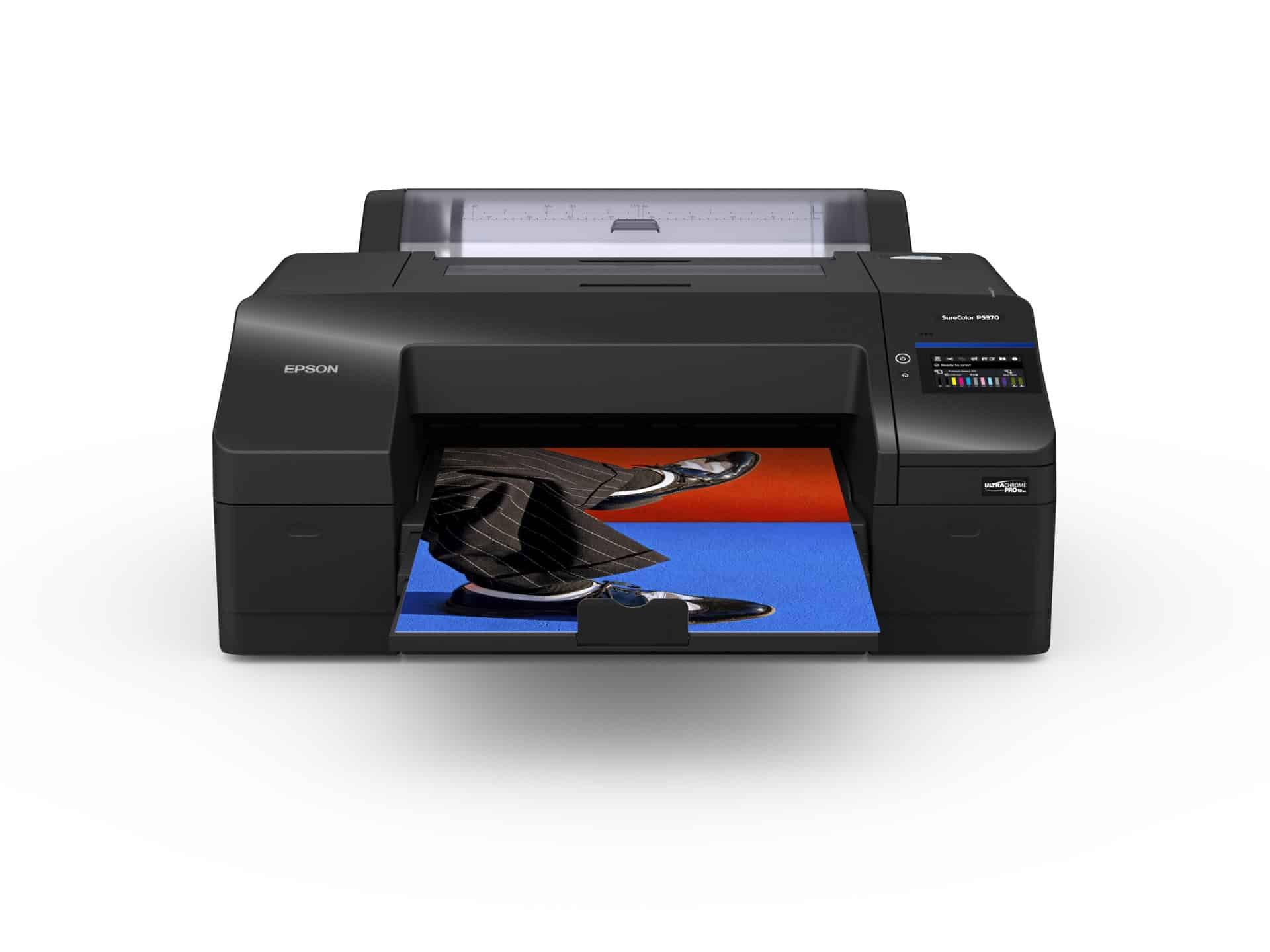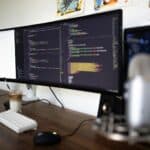3D printing has evolved from a niche hobby into a mainstream creative tool. Whether you’re prototyping a product, crafting custom toys, or simply exploring a new creative outlet, today’s printers are faster, smarter, and more user-friendly than ever before.
Once limited to industrial use, high-quality 3D printers are now within reach for hobbyists, educators, engineers, and even kids—with options spanning under $200 to well over $1,000. The key to picking the right one lies in understanding how print speed, build volume, materials, and usability impact your daily workflow.
Below, you’ll find our definitive ranking of the best 3D printers on the market right now, designed to help you make the smartest choice for your needs.
Best 3D Printers Ranked
| Rank | Product | Price |
|---|---|---|
| 1 | FLASHFORGE Adventurer 5M | Check Price |
| 2 | FLASHFORGE Adventurer 5M (High-Speed) | Check Price |
| 3 | Creality K2 Plus Combo 3D Printer | Check Price |
| 4 | Creality Ender 3 3D Printer | Check Price |
| 5 | Creality K1C 3D Printer | Check Price |
| 6 | FLASHFORGE AD5M 3D Printer | Check Price |
| 7 | ELEGOO Neptune 3 Pro 3D Printer | Check Price |
| 8 | Anycubic Kobra S1 Combo 3D Printer | Check Price |
| 9 | Creality K1 SE 3D Printer | Check Price |
| 10 | Creality K1C 3D Printer (Newer) | Check Price |
| 11 | Asani Mini 3D Printer | Check Price |
| 12 | AOSEED X-Maker Joy 3D Printer | Check Price |
| 13 | Creality K1 Max Printer | Check Price |
| 14 | QIDI PLUS4 3D Printer | Check Price |
| 15 | ANYCUBIC Kobra 2 Max 3D Printer | Check Price |
| 16 | Creality Ender 3 V3 SE | Check Price |
This table reflects a wide range of options, from ultra-fast CoreXY machines built for high-throughput prototyping to beginner-friendly plug-and-play models. Whether you’re looking for large-format versatility, multi-color functionality, or ultra-quiet operation for indoor use, there’s a model here that meets your needs. Keep reading the rest of the article to dive deeper into how these printers differ in technology, performance, and real-world usability.
Best 3D Printers
Our list of the best 3D printers features options for beginners and experts alike. These machines can turn digital designs into real objects through layered printing. We selected models based on print quality, ease of use, and value to help you find the right printer for your needs.
FLASHFORGE Adventurer 5M

The FLASHFORGE Adventurer 5M balances high-speed printing capabilities with user-friendly features, making it a solid choice for both beginners and experienced 3D printing enthusiasts.
Pros
- One-click automatic bed leveling saves time and ensures consistent first layers
- Ultra-fast 600mm/s printing speed with Core XY structure for efficiency
- Quick-change nozzle system with multiple size options for versatility
Cons
- Higher price point compared to entry-level models
- Some users report issues with the included sample filament
- Learning curve for accessing all advanced features
The Adventurer 5M stands out in the crowded 3D printer market with its impressive speed capabilities. The Core XY structure enables print speeds up to 600mm/s with 20000mm/s² acceleration, significantly cutting down production time for models. This speed doesn’t come at the expense of quality, thanks to dual-fan nozzles and vibration compensation technology.
Setup is remarkably straightforward, even for newcomers to 3D printing. The automatic bed leveling feature takes the guesswork out of one of the most frustrating aspects of 3D printing. Users simply press a button and the printer handles the rest, ensuring proper first layer adhesion every time. The dual-sided PEI platform also makes removing finished prints much easier than with standard surfaces.
The printer offers impressive versatility with its quick-change nozzle system. Swapping nozzles takes just three seconds, and users can choose between 0.25mm, 0.4mm, 0.6mm, and 0.8mm sizes to suit different project needs. The direct extruder can reach temperatures up to 280°C, allowing for printing with a wide range of materials beyond basic PLA, including ABS, PETG, TPU, and carbon fiber-infused filaments. The Flash Maker mobile app adds another layer of convenience, enabling remote monitoring and control of print jobs.
FLASHFORGE Adventurer 5M

The FLASHFORGE Adventurer 5M offers impressive speed and versatility for hobbyists who want quality prints without the usual 3D printing headaches.
Pros
- Lightning-fast printing speeds up to 600mm/s saves significant time
- One-click automatic leveling makes setup extremely easy
- Compatible with many filament types for versatile project options
Cons
- Relatively expensive compared to entry-level models
- Some users report reliability issues with certain prints
- Remote monitoring requires additional camera purchase
This printer stands out with its Core XY all-metal structure that enables printing speeds up to 600mm/s. The high-speed capability cuts printing time by over 70% compared to standard printers. Home users will appreciate how this machine balances performance with a reasonable footprint.
The automatic leveling system takes the frustration out of getting started. Users simply press a button and the printer handles the rest, creating perfect first layers without manual adjustments. The dual-sided PEI platform makes removing finished prints easy, a common pain point with other printers.
Material versatility gives this printer an edge for creative projects. It handles everything from basic PLA to advanced carbon fiber composites. The high-flow nozzle heats to 200°C in just 35 seconds, ensuring materials melt properly even during high-speed printing. Different nozzle sizes (0.25-0.8mm) let users switch between detailed work and faster production prints based on their needs.
Creality K2 Plus Combo 3D Printer

The Creality K2 Plus offers impressive multi-color printing capabilities and high speeds, but its hefty weight and complex setup may not suit beginners.
Pros
- Multi-color printing with up to 16 colors using CFS units
- Fast printing speeds up to 600mm/s with 30000mm/s² acceleration
- Automated features including AI cameras and auto-leveling
Cons
- Extremely heavy at over 70 pounds
- Higher price point than basic 3D printers
- Steep learning curve for new users
This large-format printer stands out with its multi-material capabilities. Users can print with various materials including PLA, ABS, PETG, and carbon fiber composites. The printer comes with a heated chamber and high-temperature nozzle with a hardened steel tip to handle these different materials effectively.
Speed is another strong point of the K2 Plus. The step-servo motor system enables fast printing without sacrificing quality. The printer maintains stability during high-speed operations thanks to its sturdy “Matrix” frame and dual Z-axis supported by four linear rods.
The dual AI cameras add smart monitoring capabilities to the printer. One camera watches for printing errors like spaghetti failures or foreign objects and alerts users when problems occur. This feature helps prevent wasted materials and time on failed prints.
The automatic leveling system works through dual independently motorized Z-axes and strain gauge-based compensation. This system creates smooth first layers without manual adjustments, which saves time and improves print quality.
At 350 x 350 x 350mm, the build volume offers plenty of space for large projects. The printer ships with the Creality Automatic Material System for managing multiple filaments, plus one CFS unit and four 500g filament spools to get started right away.
Creality Ender 3 3D Printer

The Creality Ender 3 offers excellent value for beginners entering the 3D printing world with its reliable performance and user-friendly setup at an affordable price point.
Pros
- Resume printing function after power outages
- Quick assembly with partially pre-built components
- Upgraded extruder reduces clogging issues
Cons
- Basic features compared to higher-end models
- Assembly requires about two hours
- Navigation button can be finicky according to users
The Ender 3 stands out as a popular entry-level 3D printer that balances cost and quality. This open-source printer comes partially assembled, making it accessible for students and hobbyists new to 3D printing. Most users can complete the setup in about two hours, which helps builders learn the basics of 3D printer construction.
Safety features include a protected power supply that heats the bed to 100 degrees in just five minutes. The printer also includes a resume function that saves your progress during unexpected power outages. This feature alone saves materials and time that would otherwise be wasted when prints fail midway through.
The aluminum frame provides stability during printing operations. With a build volume of 8.66 x 8.66 x 9.84 inches, it offers enough space for most standard projects. The upgraded extruder technology reduces the risk of filament clogs that plague many budget printers. V-shaped wheels with POM material create smoother, quieter movement during operation.
For beginners looking to start 3D printing without a massive investment, the Ender 3 delivers reliable results. Its large user community also means plenty of online support and modifications are available when users want to upgrade or customize their printer.
Creality K1C 3D Printer

The Creality K1C offers a great balance of speed and reliability for hobbyists looking to print complex models quickly without constant manual adjustments.
Pros
- Ultra-fast printing at 600mm/s with high acceleration
- Auto-calibration features eliminate setup frustration
- Clog-free direct extruder works with many filament types
Cons
- Heavy unit weighing over 27 pounds
- Some users report inconsistent extrusion issues
- May require modifications for optimal performance
The K1C stands out with its impressive speed capabilities. At 600mm/s printing speed and 20000mm/s² acceleration, it works up to 12 times faster than standard 3D printers. This makes it perfect for people who need quick results without sacrificing quality.
Setup couldn’t be easier with this printer. It arrives pre-assembled and includes an intuitive boot-up guide similar to setting up a new smartphone. The auto-calibration features handle Z offset, leveling, and input shaping tests automatically. Users can simply start the printer and walk away instead of struggling with manual paper tests.
The direct extruder system solves many common printing problems. It handles carbon fiber filament and supports high-temperature printing up to 300°C. The steel-tipped copper nozzle with titanium alloy heatbreak prevents clogs and heat creep issues. The cooling system uses three separate fans to control temperature precisely throughout the printing process.
Smart features add even more value to this printer. The AI camera can detect printing failures, foreign objects, and debris. It also allows real-time monitoring and creates time-lapse videos of your projects. This technology helps prevent wasted material and failed prints.
FLASHFORGE AD5M 3D Printer

The FLASHFORGE AD5M offers impressive speed and precision for both beginners and experts seeking a reliable 3D printer with advanced features.
Pros
- Fully automatic one-click leveling system
- Quick-swap nozzle design for easy maintenance
- CoreXY all-metal design for high-speed precision
Cons
- Assembly can be challenging for first-time users
- Instructions could be clearer
- Higher price point than basic models
The AD5M stands out with its CoreXY structure that enables printing speeds up to 600mm/s while maintaining quality. This design reduces vibration and noise even during high-speed operations. Users will appreciate the sturdy metal frame that provides stability for detailed projects.
One of the most helpful features is the automatic calibration system. The printer measures the nozzle-to-build plate distance precisely, eliminating the frustration of manual leveling. This technology ensures the first layer adheres properly every time, which is crucial for successful prints.
The quick-release nozzle system sets this printer apart from competitors. Swapping between different nozzle sizes (0.25mm to 0.8mm) takes just seconds without tools. This flexibility allows for switching between detailed work and faster printing as needed.
Print recovery after power outages adds peace of mind for longer projects. The machine saves progress and resumes from the last completed layer when power returns. The double-sided PEI steel build plate makes removing finished prints easy – just bend the plate slightly and models pop off.
Remote monitoring capabilities through the Flash Maker app let users check printing status from anywhere. This feature proves useful for those who need to keep an eye on longer prints without being physically present in the room.
ELEGOO Neptune 3 Pro 3D Printer

The ELEGOO Neptune 3 Pro offers excellent value for beginners and hobbyists with its direct extruder system, auto-leveling capability, and stable dual Z-axis design.
Pros
- Dual-gear direct extruder reduces clogs and improves print quality
- Auto bed leveling scans 36 points for accurate first layers
- Pre-assembled with quiet operation (47-48dB)
Cons
- Assembly instructions could be clearer for beginners
- Limited build volume compared to larger printers
- Auto-leveling only works with metal print surfaces
The Neptune 3 Pro comes mostly assembled, making it easy to set up even for those new to 3D printing. Its pre-installed STM32 motherboard works with silent stepper motors to keep noise levels low. Users can quickly start printing after a straightforward setup process with the included toolkit.
Print quality stands out thanks to the direct drive extruder system. Made from high-quality stainless steel with a 3:1 reduction ratio, this extruder delivers smoother filament feeding than traditional Bowden setups. The printer handles various materials well, including PLA, TPU, PETG, and ABS.
The dual Z-axis lead screws provide excellent stability during prints. This design prevents the common issue of Z-axis wobble found in single-screw printers. The auto bed leveling feature uses a precision sensor to scan the print surface and adjust for any unevenness, resulting in better first layer adhesion.
Heat management is thoughtfully designed with a titanium alloy throat pipe and aluminum heat sink. These components work with an efficient cooling fan to reduce nozzle clogs. Smart features like filament runout detection and power outage recovery add convenience for longer print jobs.
Anycubic Kobra S1 Combo 3D Printer

The Anycubic Kobra S1 Combo offers exceptional speed and multi-color printing capabilities that make it worth considering for both beginners and experienced 3D printing enthusiasts.
Pros
- Prints up to 12 times faster than standard FDM printers
- Features 4-color printing with expansion to 8 colors
- Includes built-in filament drying system
Cons
- Large footprint requires significant space
- Higher price point than single-color printers
- Heavy unit weighs over 56 pounds
The Kobra S1 Combo stands out in the crowded 3D printer market with its impressive 600mm/s maximum printing speed. This rate drastically cuts down project completion times compared to typical printers. Users can create models in hours that would normally take days with standard equipment.
Multi-color printing gives this machine a significant edge. The 4-color system lets hobbyists create vibrant, detailed models without manual filament changes. Two units can even work together for 8-color printing, opening up new creative possibilities for complex projects.
The built-in filament drying system shows Anycubic’s attention to practical details. Dual PTC heating modules combined with 360° hot air circulation keep materials in optimal condition. This feature helps prevent common printing issues like stringing and inconsistent extrusion that often plague prints with moisture-affected filament.
App-based remote control adds convenience to the printing process. Users can monitor and control their projects from anywhere using their smartphones. This feature proves especially useful for longer prints that might need adjustments during off-hours.
Creality K1 SE 3D Printer

The Creality K1 SE is a solid choice for both beginners and experienced makers due to its impressive speed, reliable build quality, and user-friendly features.
Pros
- Lightning-fast printing at up to 600mm/s (12x faster than standard printers)
- One-tap auto calibration eliminates frustrating manual leveling
- Durable tri-metal nozzle with quick heating capability
Cons
- Some users report occasional error messages with nozzle heating
- Frame may vibrate during high-speed operations
- Setup instructions could be clearer
Speed sets the K1 SE apart from other 3D printers on the market. Using CoreXY technology, this printer maintains quality while printing up to 12 times faster than regular models. The 20000mm/s² acceleration helps create detailed prints in less time.
The printer features a solid metal frame made with die-cast aluminum parts. Corner gussets and crossbeams add stability during printing. This sturdy build helps reduce shaking, though some users note it can still vibrate at top speeds.
Setup is simple for most users. The one-tap auto calibration feature eliminates the need for manual bed leveling. This makes the K1 SE much more approachable for beginners. The printer runs on open-source Creality OS based on Klipper, allowing for advanced functions and customization.
The extruder system handles both standard filaments and flexible TPU. A side spring and ball plunger help feed materials precisely. The tri-metal nozzle combines steel, copper, and titanium for durability and easy maintenance. It heats from 0 to 300°C in just 75 seconds.
Users have reported mostly positive experiences with print quality. The anti-vibration cooling fan and vibration-reducing algorithms help minimize ringing and surface artifacts. This results in cleaner prints even at high speeds.
Creality K1C 3D Printer

The Creality K1C offers impressive speed and versatility for both beginners and experienced users looking for a reliable 3D printer that can handle advanced materials.
Pros
- Lightning-fast 600mm/s print speed (12x faster than standard printers)
- Auto-calibration eliminates manual bed leveling hassle
- Supports carbon fiber filaments with its 300°C hotend
Cons
- Relatively heavy at 27 pounds
- Some users report power issues with new units
- Filament changing can be cumbersome
The K1C stands out with its CoreXY system that maintains quality even at high speeds. This printer isn’t just fast—it’s built to handle complex jobs without compromising on detail. The clog-free direct extruder paired with the tri-metal “Unicorn” nozzle means fewer print failures and more consistent results.
Setup is remarkably simple. The auto-calibration feature handles the tedious bed leveling process with a single tap. This printer also includes an AI camera that monitors prints for problems and enables real-time viewing of projects. For hobbyists concerned about noise and air quality, the K1C includes an activated carbon filtration system and a silent mode that keeps operation under 45dB.
The enclosed chamber design helps maintain consistent temperatures, making it ideal for advanced materials. Its ability to print with carbon fiber reinforced filaments sets it apart from many competitors in this price range. The Creality OS software ecosystem provides users with powerful features like intelligent cooling and custom optimization options while remaining open-source for those who like to tinker.
Asani Mini 3D Printer

The Asani Mini 3D Printer offers an excellent entry point for beginners and kids with its fully assembled design and user-friendly features.
Pros
- Ready to use straight out of the box
- Auto-leveling feature simplifies operation
- Compact size fits easily in homes and classrooms
Cons
- Limited build volume for larger projects
- Only works with specific filament types
- May lack advanced features for experienced users
This compact 3D printer comes completely assembled, making it perfect for anyone new to 3D printing. No need to worry about complicated setup – just unpack it and start creating. The printer measures just 8.3″ x 8.3″ x 11.4″, making it ideal for small spaces like dorm rooms, classrooms, or home offices.
Beginners will appreciate the thoughtful design features. The auto-leveling function removes one of the most frustrating aspects of 3D printing. The flexible magnetic build plate makes removing finished prints a breeze. Users can also load and unload filament with a single button press, which is much easier than many other printers in this price range.
The kit includes everything needed to start right away. It comes with 10 meters of PLA filament and a microSD card containing pre-installed designs and slicing software. The printer works with MAC, Windows, and Linux systems and supports WiFi connectivity. It’s compatible with popular slicing software like Cura and WiiBuilder, giving users plenty of options for creating their designs. With a 4.6-star rating from 475 reviews, this printer offers solid value for newcomers to 3D printing.
AOSEED X-Maker Joy 3D Printer

The AOSEED X-Maker Joy offers an excellent entry point into 3D printing for families and young creators with its user-friendly design and rich feature set.
Pros
- Simple one-click operation with smartphone app control
- Includes 8 PLA filaments and access to 1,500+ designs
- Safety-focused enclosed design ideal for children
Cons
- App connectivity issues reported by some users
- Limited build volume compared to adult models
- Some projects require adult assistance initially
This beginner-friendly 3D printer stands out with its focus on accessibility. The X-Maker Joy connects to smartphones and tablets via WiFi, allowing users to control printing with just a tap. Kids can choose from thousands of pre-made designs or customize their own creations through the app’s design modules.
Safety features make this printer appropriate for young users. The fully enclosed structure prevents accidental contact with hot components. No bed leveling is required, which removes one of the most frustrating aspects of traditional 3D printing. The built-in camera lets parents monitor prints remotely through their phones.
Print quality impresses with 0.05mm precision capabilities. The printer comes ready to use with eight different colored filaments included in the package. Many reviewers mention their children quickly mastered the basics and began creating their own toys and projects. The machine’s ability to generate time-lapse videos of prints adds another fun dimension that encourages sharing and creativity.
Creality K1 Max Printer

The Creality K1 Max combines high-speed printing, intelligent features, and a generous build volume, making it a solid choice for both beginners and experienced users seeking efficient 3D printing.
Pros
- Impressive 600mm/s printing speed saves significant time
- Large 11.8-inch cube build volume handles bigger projects
- Smart AI and camera systems help prevent print failures
Cons
- Bulky size requires substantial desk space
- Higher price point compared to entry-level printers
- Some users report occasional nozzle clogging issues
The K1 Max stands out with its remarkable printing speed. At 600mm/s, it works up to 12 times faster than standard FDM printers. This speed boost makes a huge difference for users who print regularly or need to complete projects quickly.
Build volume often limits what can be created on a 3D printer. The K1 Max solves this problem with its spacious 300x300x300mm (11.81×11.81×11.81 inches) printing area. Users can print multiple objects simultaneously or tackle larger single projects without needing to split models into smaller parts.
Smart features help prevent common printing failures. The built-in LiDAR scans the first layer automatically and stops the print if problems occur. The AI camera watches for spaghetti failures, debris, and other issues during printing. These intelligent systems reduce waste and save time by catching problems early.
The printer’s heating system and cooling design work together to improve print quality. Its ceramic heater can reach up to 300°C, handling various filament types. Dual cooling fans help prevent common issues like stringing and warping. This cooling system works quickly to harden newly printed layers.
Setting up the K1 Max requires minimal effort. Many users report successful printing straight out of the box. The auto-leveling feature removes one of the most frustrating aspects of 3D printing for beginners. This printer offers an accessible entry point for newcomers while providing the speed and features that experienced users value.
QIDI PLUS4 3D Printer

The QIDI PLUS4 offers exceptional value for serious makers with its large print volume, high-temperature capabilities, and active chamber heating system.
Pros
- Large 12″×12″×11″ build volume allows printing multiple models simultaneously
- Heated chamber with 400W power prevents warping when printing high-temperature materials
- High-temperature hotend (370°C) supports advanced filaments like PPS-CF and PPA-CF
Cons
- Heavy unit weighing over 70 pounds may require dedicated space
- Higher price point compared to entry-level printers
- Multi-filament system not included (coming in 2025)
The QIDI PLUS4 stands out in the crowded 3D printer market with its impressive size. The 12″×12″×11″ build volume lets users print large single objects or multiple models in one session, which saves significant time for people who need to produce many parts.
Speed matters in 3D printing, and this model delivers with up to 600mm/s print speeds. The CoreXY structure inherited from previous models helps maintain precision even at high speeds. Setup is straightforward too – users can unbox and start printing within 10 minutes.
What makes this printer special is its chamber heating system. The 400W heating element with dual-layer insulation creates a stable warm environment that prevents warping when printing materials like ABS or PPS-CF. This feature is crucial for professionals and hobbyists who need perfect results with engineering-grade materials.
The upgraded 80W hotend can reach 370°C, handling specialty filaments that cheaper printers can’t manage. Its integrated nozzle design reduces clogging problems common with high-temperature materials. The printer includes modern features like remote printing through the QIDI app, filament detection, and a built-in camera for monitoring prints from anywhere.
Durability improvements include thicker components throughout – from the 6mm aluminum bed to 10mm lead screws and linear shafts. These upgrades ensure the printer maintains accuracy over long production runs. For users looking forward to multi-color printing, the PLUS4 is designed to work with QIDI’s upcoming filament box system scheduled for release in early 2025.
ANYCUBIC Kobra 2 Max 3D Printer

The ANYCUBIC Kobra 2 Max offers impressive speed and size benefits for serious creators, though some early users report it still has refinement issues.
Pros
- Extremely large 88L print volume (420x420x500mm)
- Ultra-fast 500mm/s printing speed
- Automatic bed leveling with smart Z-offset
Cons
- Some users report it feels like an unfinished product
- Learning curve for proper bed adhesion
- Weight of 46.8 pounds makes it difficult to move
This massive printer stands out in the market with its exceptional print volume. At 420x420x500mm, the Kobra 2 Max can handle projects many other printers simply can’t fit. The size makes it perfect for people who need to create large prototypes or models without splitting them into smaller parts.
Speed is another major selling point. ANYCUBIC claims this printer can reach 500mm/s, which is significantly faster than standard 3D printers. This speed boost could save users many hours on large prints. The printer also includes smart features like one-click vibration compensation and intelligent flow control to maintain quality at higher speeds.
Setup seems straightforward according to most reviews. The auto-leveling feature with smart Z-offset adjustment helps users get started quickly. The printer works with ANYCUBIC’s smartphone app for remote monitoring and control. While some early adopters mention teething problems, many users praise its print quality once properly configured. For those needing a large-format printer with speed capabilities, this model deserves consideration despite its early-release quirks.
Creality Ender 3 V3 SE

The Creality Ender 3 V3 SE offers impressive speed and user-friendly features for beginners and experienced makers alike, despite some build quality concerns.
Pros
- Fast printing speeds up to 250mm/s with good quality output
- Quick 20-minute setup with auto-leveling features
- Compatible with multiple filament types through direct extruder
Cons
- Some users report loose screws and shaky bed issues
- Limited included print files for beginners
- No WiFi connectivity for file transfers
This budget-friendly 3D printer stands out with its impressive 250mm/s printing speed. The Ender 3 V3 SE prints much faster than previous Ender models while maintaining good print quality. For beginners, the quick setup process takes only about 20 minutes, which is a huge time-saver compared to other printers.
The “Sprite” direct extruder system makes this printer quite flexible. It handles various materials like PLA, PETG, and TPU with ease. The dual Z-axis structure with timing belt synchronization helps reduce wobbling problems that often plague budget printers. These features create more stable, accurate prints.
Loading and unloading filament is simple with the one-tap system. The printer includes a PC spring steel build plate that makes removing finished prints easier – just bend it slightly and parts pop off. While some users have reported quality control issues with loose parts, the 32-bit silent mainboard runs quietly during operation. For the price point, this printer offers solid performance for hobbyists who want to start 3D printing without breaking the bank.
Buying Guide
Finding the right 3D printer can be tricky. This guide will help you pick a printer that meets your needs and budget.
Price Range
3D printers vary widely in cost. Entry-level models start around $200, while professional-grade printers can cost thousands.
| Price Range | User Level | Features |
|---|---|---|
| $200-$500 | Beginners | Basic functions, smaller build volume |
| $500-$1,000 | Hobbyists | Better precision, more material options |
| $1,000+ | Professionals | Large build volumes, advanced features |
Print Technology
Different technologies work better for different projects.
- FDM (Fused Deposition Modeling) – Most common and affordable. Melts plastic filament layer by layer.
- SLA (Stereolithography) – Uses liquid resin cured by light. Creates smoother, more detailed prints.
- SLS (Selective Laser Sintering) – Fuses powder materials with a laser. Good for complex designs.
Build Volume
This determines the maximum size of objects you can print. Measure in inches or millimeters (length × width × height).
Larger isn’t always better. Bigger print beds cost more and take up more space.
Print Speed and Quality
Faster printers save time but might sacrifice quality. Resolution is measured in microns—lower numbers mean finer details.
Material Compatibility
Consider what materials you want to print with. Some printers work only with specific filament types.
Common materials include PLA, ABS, PETG, TPU, and nylon. Each has different properties and uses.
Software and Connectivity
User-friendly software makes printing easier. Look for printers compatible with popular slicing programs.
Wi-Fi connectivity and SD card slots offer convenient printing options.
Frequently Asked Questions
3D printing has many practical considerations that affect both beginners and experienced users. These questions address key aspects from selecting your first printer to understanding ongoing costs and material limitations.
What are the essential factors to consider when selecting a 3D printer for beginners?
Price is often the first consideration for beginners. Entry-level 3D printers typically range from $200 to $500, offering basic features and smaller build volumes.
Ease of use matters significantly. Look for printers with simple assembly, user-friendly interfaces, and good customer support for troubleshooting.
Print quality varies between models. For beginners, FDM (Fused Deposition Modeling) printers provide a good balance of affordability and decent quality for most projects.
Build volume determines the maximum size of objects you can print. Beginners should consider what they plan to make before choosing a printer with appropriate dimensions.
How does the functionality of a 3D printer impact educational settings like schools?
Safety features become critical in school environments. Enclosed printers with locking mechanisms protect students from hot components and moving parts.
Reliability reduces frustration in classroom settings. Schools benefit from printers with consistent performance and minimal maintenance requirements.
Software compatibility with school computers is essential. Many educational 3D printers come with simplified slicing software designed specifically for classroom use.
Print speed affects how many students can complete projects. Faster printers allow more students to use the equipment within limited class periods.
Which features distinguish the best 3D printers for children, ensuring safety and ease of use?
Enclosed designs prevent accidental contact with hot nozzles or moving parts. The best children’s 3D printers fully contain all potentially dangerous components.
Auto-leveling beds make setup easier. This feature removes one of the most technical aspects of 3D printing, allowing children to focus on creating rather than calibrating.
Child-friendly software uses visual interfaces rather than complex settings. Look for printers with simplified, colorful controls designed specifically for younger users.
Low temperature options are safer for younger users. Some children’s printers use PLA filament which can be printed at lower temperatures than other materials.
What criteria define the best 3D printers for small businesses in terms of cost efficiency and reliability?
Print consistency is crucial for commercial products. Small businesses need printers that produce identical results across multiple print jobs.
Maintenance costs affect long-term affordability. Printers with readily available, reasonably priced replacement parts offer better value over time.
Production speed impacts business efficiency. Dual extruders or faster print speeds can significantly increase output for businesses with regular production needs.
Support quality from manufacturers matters when problems arise. Small businesses benefit from printers with responsive customer service and extensive online communities.
In what ways can the limitations of 3D printing materials affect the outcome of a print?
Temperature sensitivity can cause warping or poor layer adhesion. Materials like ABS require higher temperatures and often need enclosed printing environments to prevent cooling too quickly.
Strength varies significantly between materials. PLA is easy to print but relatively brittle, while PETG offers better durability for functional parts.
UV resistance determines outdoor usability. Most standard printing materials degrade when exposed to sunlight, limiting their use for exterior applications.
Food safety concerns restrict some applications. Only specific materials are certified food-safe, and even then, the layer lines in 3D prints can harbor bacteria.
What are the ongoing costs associated with operating a 3D printer at home?
Filament represents the primary continuous expense. A standard 1kg spool costs between $20-50 depending on material type and quality, providing enough material for numerous small to medium projects.
Electricity consumption adds to operating costs. Most home 3D printers use between 50-150 watts during operation, similar to a laptop or small household appliance.
Replacement parts become necessary over time. Nozzles wear out and may need replacement after 3-6 months of regular use, costing about $8-15 each.
Failed prints contribute to hidden costs. Learning curves and experimentation inevitably lead to wasted material, which should be factored into budget planning.






